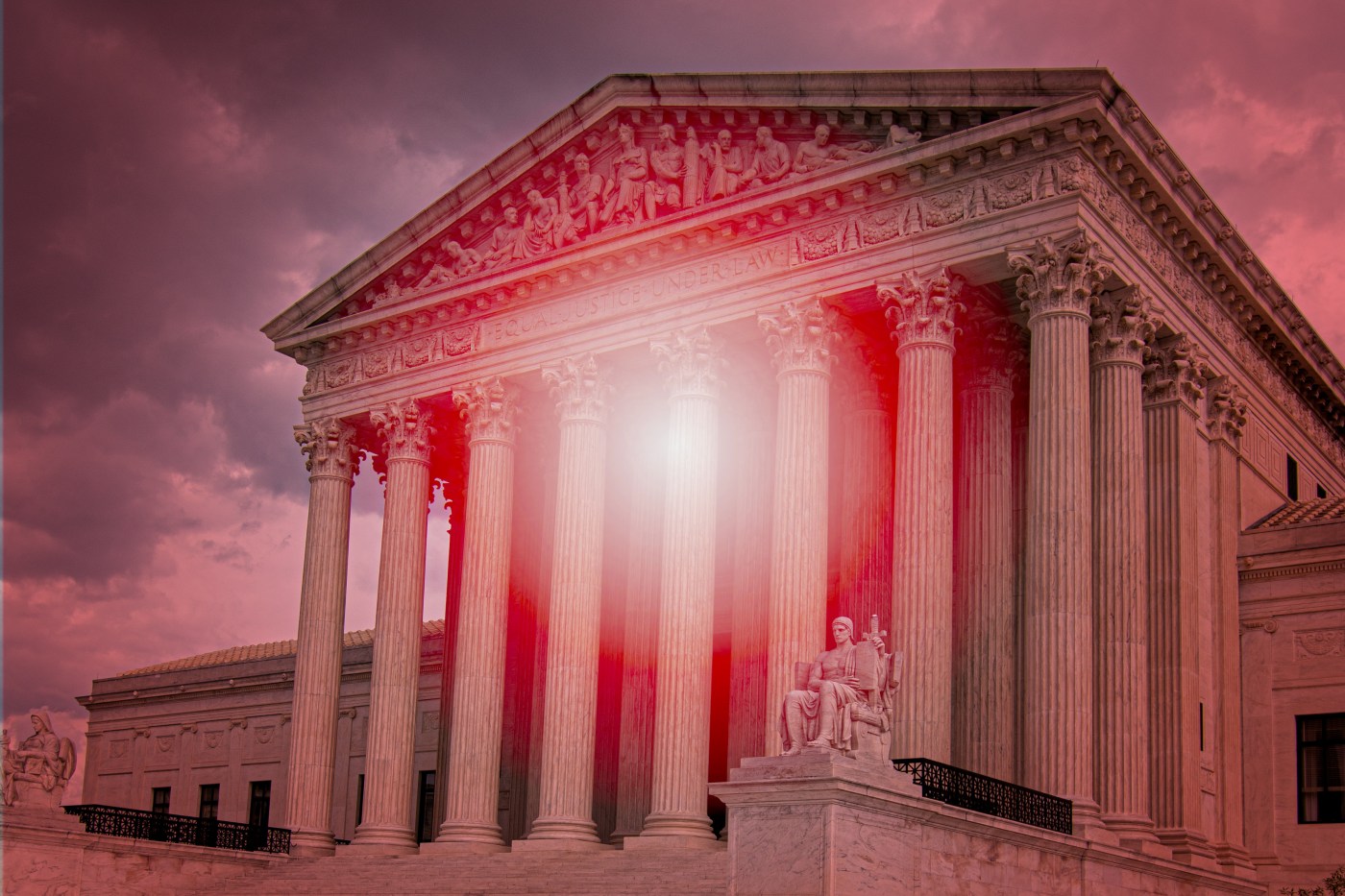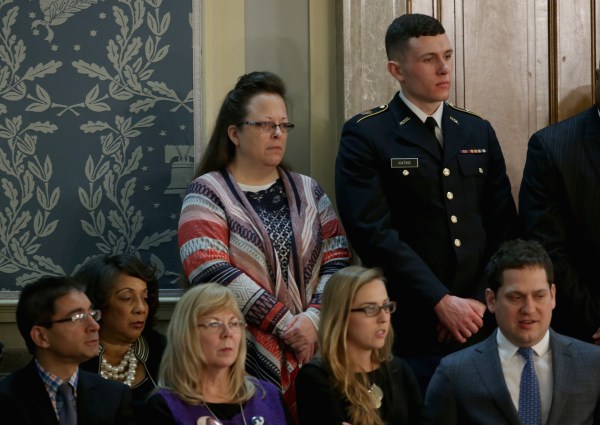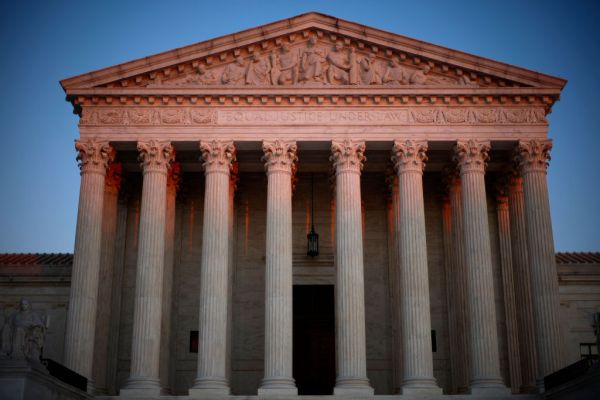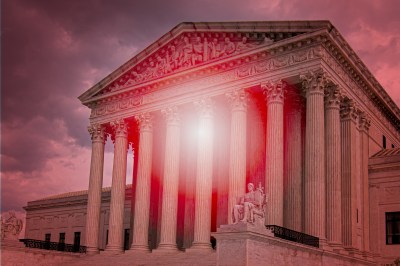When it comes to the Supreme Court's rulings affecting the executive branch, narratives can change quickly. A year ago, when the court was poised to end Chevron deference, critics issued a wave of warnings that such a move would “incapacitate” federal agencies—even “upend government function as we know it.” But barely a year after Chevron’s end, it’s hard to find many pro-Chevron commentators wishing that courts were more deferential to agencies now.
Something similar seems to be happening around the court’s Trump v. CASA decision on federal judges’ issuance of nationwide injunctions. Before oral arguments, some warned that limiting such injunctions would create sheer “chaos … not just in the judicial system but in the impacts on every person residing in the United States.” When the court issued its decision, Slate declared that the ruling “could not be more disastrous.”
But within days, a new narrative was already forming. The court’s decision had “silver linings” for anti-Trump litigants, Politico first reported, and left open alternative paths to the courthouse door. Soon it was clear that “judges are finding workarounds.” Within days of the decision, a federal judge in Washington issued a new nationwide injunction against the executive order ending birthright citizenship, this time in connection with a class-action lawsuit. Quickly another federal judge in New Hampshire issued a similar nationwide injunction in another class-action case.
It is not obvious that these initial post-CASA nationwide injunctions will fare much better than the ones that the Supreme Court just renounced. At least one legal scholar, Elias Neibart, already has raised serious questions whether federal judges have the power to grant nationwide injunctions for class-action lawsuits at the very outset of the litigation, before the “class” has even been properly certified.
More broadly, it is far too soon to say confidently that the post-CASA litigation environment will actually differ significantly from the pre-CASA era. Other laws noted by the CASA majority’s justices, for example, might allow a kind of nationwide injunction, albeit at a slower pace than the pre-CASA injunctions.
Still, it is not too soon to begin thinking about the ripple effects of this decision. So far, most attention has focused on whether CASA will affect the courts’ treatment of executive orders. But it is worth asking a more direct question: Will CASA eventually affect how we think about the executive orders themselves?
Before looking too far down the road, it is worth keeping in mind specifically what the CASA decision settled so far. The court’s decision rested on the original meaning of the Judiciary Act of 1789, Congress’ original framework for the federal trial courts. Section 11 of the act empowers trial courts to hear certain kinds of “suits of a civil nature at common law or in equity.” And that provision, as the court previously explained, empowers trial judges to grant equitable relief (such as injunctions) only as “traditionally accorded by courts of equity” in 1789.
In CASA, then, the court concluded that modern nationwide injunctions simply do not fit that historical bill. Early American trial judges did not use one person’s lawsuit against the executive branch as an opportunity to bind the executive branch nationally. “The universal injunction was conspicuously nonexistent for most of our Nation’s history,” Justice Amy Coney Barrett explained in her opinion for the court. And its “absence from 18th- and 19th-century equity practice settles the question of judicial authority.”
“So far, most attention has focused on whether CASA will affect the courts’ treatment of executive orders. But it is worth asking a more direct question: Will CASA eventually affect how we think about the executive orders themselves?”
This is, to be sure, a major decision. When I summarized the oral arguments, I suggested that the court might not go so far: “It is not hard to imagine the court, perhaps in an opinion by Chief Justice John Roberts, issuing a decision that rejects the administration’s core argument but also reminds the lower courts that nationwide injunctions are not to be given out haphazardly,” I wrote. Needless to say, the court saw the question as much more cut-and-dried than I did, and it wrote a much more sweeping opinion against nationwide injunctions.
But the court swept aside only one kind of nationwide injunctions: those premised on the Judiciary Act of 1789’s grant of power for federal courts to hear cases “in equity.” Other laws might still allow for broader nationwide relief. The majority opinion pointed to nationwide class-action lawsuits against the government, brought under Rule 23 of the Federal Rules of Civil Procedure. And Justice Brett Kavanaugh’s concurring opinion pointed also to the Administrative Procedure Act, which empowers courts to “set aside” unlawful agency actions.
Still, each of those alternatives has its own important limits. First, consider class-action lawsuits. Even if the federal rules for class action lawsuits empower a judge to grant a nationwide injunction, it is not clear that the judge can issue such an injunction before certifying that the lawsuit involves a proper “class” of plaintiffs. Rule 23 sets significant requirements for a court’s recognition of “class” status, and settling this preliminary question of “class” status takes real time at the outset of a case.*
As Elias Neibart observes in his aforementioned article, there seems a risk of judges putting the cart before the horse: The thrust of the court’s decision in CASA seems to suggest that nationwide injunctions might be proper only for class-action lawsuits that have actually been certified as proper “class” actions, such that everyone in the case, the plaintiffs and defendant alike, would be bound by the court’s decisions. To be sure, professor Mila Sohoni—one of the leading experts in this field—disagrees completely with that conclusion. Perhaps the Supreme Court will settle this question soon, too. But at the very least, judges who are mindful of Rule 23’s rigorous standards for class-action lawsuits may pause for at least a few more days or weeks before granting the kinds of nationwide injunctions that, until now, have seemed rather instantaneous.
The other alternative for nationwide relief, then, is the Administrative Procedure Act (APA), which empowers courts to “set aside” unlawful agency actions. There already is a thriving, years-long debate over what kind of remedies that provision requires, allows, or forbids, and maybe the Supreme Court will soon be digging in there, too.
But for lawsuits against presidential administrations, the APA’s biggest wrinkles are the fact that it can be used only to bring lawsuits against agencies, not presidents, and the fact that such lawsuits can be brought only to challenge “final agency action.” That is, instead of filing a lawsuit to instantly block a president’s new executive order, the APA requires plaintiffs to wait for an agency to take final action—to promulgate a new regulation, or to issue a decision in a case-specific dispute—before bringing a lawsuit and requesting a nationwide injunction.
There is perhaps a third alternative for those who seek quick nationwide injunctions against a president’s orders: find a plaintiff with a nationwide footprint. The court’s CASA decision recognizes there may be cases where a plaintiff cannot receive “complete relief” with an injunction limited to a single judicial district. “Under this principle,” the court wrote, “the question … is whether the injunction will offer complete relief to the plaintiffs before the court.” At first glance, at least some plaintiffs will fit that bill: most obviously, businesses with nationwide operations, whose conflict with an administration’s policy would not be limited to a single judicial district. Perhaps other such “nationwide plaintiffs” exist. In any event, this will be a limited category.
The real upshot of CASA, then, is that a lot will turn on how the new era of class-action injunctions and APA “set asides” will play out. And that is the point at which we should consider not just the effects on litigation challenging executive orders, but also the effects on executive orders themselves.
What I mean is this: The last decade’s pattern of instant litigation against executive orders made us take for granted that executive orders and other forms of presidential policymaking are the kind of thing that need and deserve immediate judicial responses. As soon as the president signs a new executive order or announces a new policy, the default assumption has been that the president’s own action will have an immediate impact on people’s rights and responsibilities, such that an instant lawsuit—and an instant injunction—is necessary.
The post-nationwide-injunctions era will almost certainly slow down the pace of litigation. This is especially true for APA lawsuits: A significant amount of time will elapse between the president signing an executive order and the administration making a “final agency action” that can be challenged in court. But class-action lawsuits will also proceed more slowly, if courts cannot issue an injunction before first deciding whether the group of hypothetical plaintiffs is actually a proper “class” under Rule 23. Even if that class determination takes just a few weeks, it will be a significant delay in the pace of counter-presidential litigation.
This surely will give the president a big advantage in many cases, and it will be unsettling to anyone who worries that the Trump administration is not shy about shuttling people out of the country faster than courts can keep up.
But perhaps ironically, this slower pace of litigation may also cause a change in how the executive orders themselves are perceived. When the Administrative Procedure Act forces plaintiffs and judges to focus not simply on what a president “orders,” but rather on what an agency actually does, it reminds us that a president’s orders are not actually “law,” at least not for people outside the administration itself.
And even for class-action injunctions, where the delay is simply a function of the class-action certification process itself, the passage of time will create a substantial gap of time between the president’s “order” and the court’s intervention. Perhaps this will lead the courts, and people, to react to executive orders with a little less urgency: Yes, that’s what the president says the law is, but just wait until the courts have an opportunity to start deciding cases.
Let’s not be pollyannaish here, of course. The power of a president to issue an executive order, and to impose his policy on the nation faster than courts can keep up, is a major problem in a constitutional system of limited government. And it is all the more ominous when the president seems willing to take previously unthinkable actions with astonishing speed. President Trump welcomed the CASA decision as a “monumental victory,” after all.
But the court is channeling counter-presidential litigation away from trial judges’ instant nationwide injunctions and into much less frenetic forms of judicial power: APA lawsuits, class-action lawsuits, and eventually the Supreme Court’s own review. It may help to make judicial power weightier, and executive orders less so.
Correction, July 24, 2025: This article was updated to remove references to two class-action lawsuits for which we incorrectly stated that judges granted nationwide injunctions without certifying a class. In one case, the judge did certify a class before granting an injunction, and in the other, a judge granted a provisional class certification.







Please note that we at The Dispatch hold ourselves, our work, and our commenters to a higher standard than other places on the internet. We welcome comments that foster genuine debate or discussion—including comments critical of us or our work—but responses that include ad hominem attacks on fellow Dispatch members or are intended to stoke fear and anger may be moderated.
With your membership, you only have the ability to comment on The Morning Dispatch articles. Consider upgrading to join the conversation everywhere.